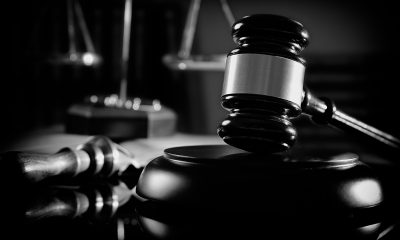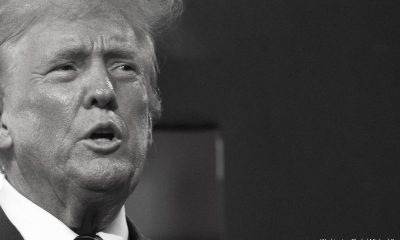National
SPECIAL REPORT: Poverty in the LGBT community
Studies show image of ‘gay affluence’ is a myth
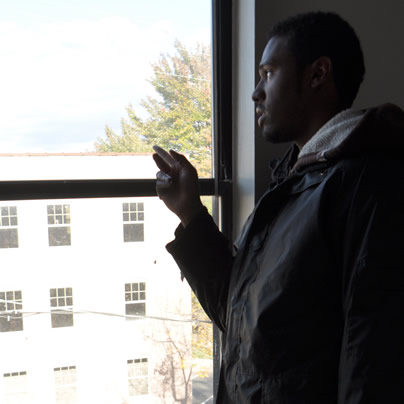
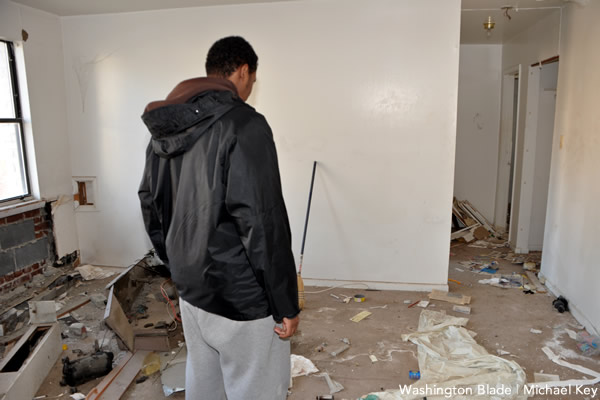
Kadeem Swenson told the Blade in 2010 that his parents kicked him out of the house for being gay. He spent a year living in abandoned buildings in D.C. (Washington Blade photo by Michael Key)
Editor’s note: This week, the Blade kicks off a special yearlong focus on poverty in the LGBT community. The occasional series will examine the problem with special reports from D.C. and around the country. To share your ideas or personal story, visit us on Facebook or email [email protected].
As the 50th anniversary of the U.S. war on poverty launched by President Lyndon B. Johnson in 1964 is commemorated this year, LGBT advocates are pointing to little noticed studies showing that the rate of poverty in the LGBT community is higher than that of the general population.
In a 2013 report analyzing data from the U.S. Census Bureau and other data measuring poverty in the United States, the Williams Institute, a research arm at the University of California Law School in Los Angeles that specializes in LGBT issues, concludes that rates of poverty are higher than the general population among gay men and lesbians between the ages of 18-44 and gay men and lesbians living alone.
The report shows that couples – both gay and straight – tend to have a lower rate of poverty than single people and the population as a whole. But it found that the poverty rate for lesbian couples is higher than that of gay male couples and opposite-sex couples and the poverty rate of same-sex African-American couples is higher than it is for opposite-sex African-American couples.
Among the report’s findings that surprised LGBT activists were data showing that bisexual men and women had poverty rates of 25.9 percent and 29.4 percent respectively – higher than gay men (20.5 percent) and lesbians (22.7 percent). The report says the same set of data show that heterosexual men had a poverty rate of 15.3 percent compared to a rate of 21.1 percent for heterosexual women.
“The LGB poverty data help to debunk the persistent stereotype of the affluent gay man or lesbian,” the Williams Institute report says.
“Instead, the poverty data are consistent with the view that LGB people continue to face economic challenges that affect their income and life chances, such as susceptibility to employment discrimination, higher rates of being uninsured, and a lack of access to various tax and other financial benefits via exclusion from the right to marry,” the report says.
The report uses the U.S. Census Bureau definition of poverty for 2012 in its analysis of LGBT poverty levels based on family income. That definition lists the “poverty line” for a single person household as an annual income of $11,815 or less. The poverty line for a two-person household was $15,079, and for a four-person household was $23,684 in 2012.
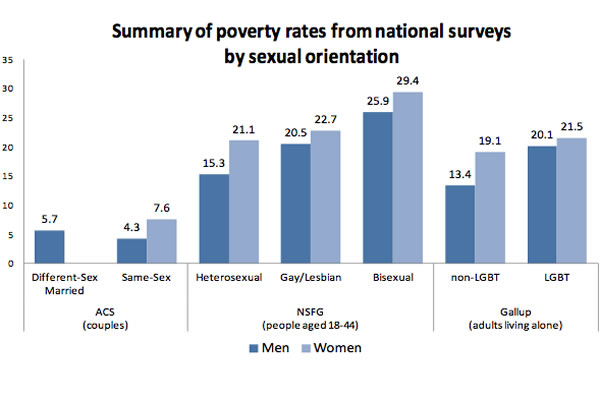
Researchers with the Williams Institute say this graph summarizes their findings of higher poverty rates among samples of mostly LGB and some LGBT people in the U.S. The bar graph on the left represents data taken from the U.S. Census Bureau’s 2010 American Community Survey (ACS). The chart in the center is taken from data from the U.S. Center for Disease Control and Prevention’s 2010 National Survey of Family Growth (NSFG). The chart at right is from a 2012 phone survey conducted by the Gallup Poll organization. (Graph courtesy of the Williams Institute)
Trans poverty ‘extraordinarily high’
A separate study prepared jointly by the National Center for Transgender Equality and the National Gay and Lesbian Task Force in 2011, called “Injustice at Every Turn,” shows dramatically higher rates of poverty and homelessness among transgender Americans in each state, the District of Columbia and U.S. territories.
Kylar Broadus, senior policy counsel and director of the Trans Civil Rights Project for The Task Force, called the poverty rate in the transgender community “extraordinarily high.” He said a key factor leading to economic hardship among transgender people is the persistent problem of employment discrimination.
“There’s double the national rate of unemployment,” he said in discussing the trans community of which he said he’s a member. “And once we’re employed 90 percent of those surveyed reported experiencing harassment and discrimination on the job,” he noted in pointing to the NCTE-Task Force study.
“Forty-seven percent said they experienced adverse outcomes such as being fired, not hired or denied promotions because of being transgender or gender non-conforming,” Broadus said.
He said the respondents reported various forms of housing discrimination that are contributing factors to homelessness in the transgender community. According to the study, 19 percent of respondents reported having been refused a home or an apartment to rent and 11 percent reported being evicted because of their gender identity or expression.
“Nineteen percent experienced homelessness at some point in their lives because they were transgender or didn’t conform as well, and then 55 percent were denied access to shelters,” he said.
Another study released by the Williams Institute last week reports that 2.4 million LGBT adults, or 29 percent, “experienced a time in the last year when they did not have enough money to feed themselves or their family.”
The study, written by Williams Institute demographer Gary Gates, found that LGBT people are more likely to rely on the federal food stamp program for assistance than their heterosexual counterparts.
“One in four bisexuals (25 percent) receive food stamps,” the report says, “34 percent of LGBT women were food insecure in the last year; and LGBT African Americans, Native Americans, and Native Hawaiians experienced food insecurity in the last year at rates of 37 percent, 55 percent, and 78 percent respectively,” the report says.
LGBT homeless rate high in San Fran
Yet another report released last June found that 29 percent of the homeless population in San Francisco identified as LGBT. The report, which was part of the city’s biennial homeless count, included for the first time a count of the number of homeless people who identified themselves as gay, lesbian, bisexual or transgender, according to the San Francisco Chronicle.
Brian Bassinger, director of the San Francisco-based AIDS Housing Alliance, which provides services to the HIV and LGBT communities, said although the finding to some degree reflects the high LGBT population in San Francisco, which is 15 percent, he believes LGBT people make up a sizable percent of the homeless population in other cities throughout the country.
Bassinger said he also believes the 29 percent figure for San Francisco is most likely an under count and that the actual number is higher.
“LGBT people in the shelter system here are regularly targeted for violence, harassment and hate crimes, which are very well documented,” he said.
Since much of the effort to count homeless people in the city takes place at shelters, large numbers of LGBT homeless people are not counted because they generally avoid the shelters out of fear of harassment and violence, Bassinger said.
He said his group also closely monitors a development in San Francisco threatening to push the city’s older LGBT population into poverty and which may be occurring in other cities – the enormous rise in the cost of housing due to gentrification and a booming real estate market. Those who for years have lived in popular gay neighborhoods as tenants are being displaced by the conversion of rental apartment buildings and houses into upscale condominiums, Bassinger said.
“Long-term San Franciscans who have spent decades building the system to deliver access to equal treatment under the law here in San Francisco are getting displaced by all of these people moving into our community,” he said.
And because they can no longer afford to live in San Francisco many are being forced to move to other parts of the state or other states that are less LGBT friendly and don’t have the support community they came to enjoy for so many years, according to Bassinger.
The Williams Institute’s 2013 report, meanwhile, analyzes data from four surveys of the U.S. population with a demographic breakdown that included mostly gay men, lesbians, and bisexuals as well as a smaller, combined “LGBT” sample.
The four surveys were conducted by these organizations or government agencies:
• The 2010 American Community Survey conducted by the U.S. Census Bureau with a sample of more than 500,000 and which included data from same-sex couple households.
• The National Survey of Family Growth conducted by the U.S. Centers for Disease Control and Prevention’s National Center for Health Statistics from 2006-2010 included a sample of more than 19,000 people throughout the country, including people who identified as LGB, the Williams Institute study says.
• The California Health Interview Survey conducted by UCLA’s Center for Health Policy Research in collaboration with California Department of Public Health surveyed more than 50,000 Californians, including LGB adults from 2007 to 2009.
• A Gallup Daily Tracking Poll conducted between June 1 and Sept. 30, 2012 with a sample of more than 120,000 adults from 18 and older, included people who identified themselves as LGBT in all 50 states and D.C. The poll was conducted by phone.
The report includes these additional findings on the subject of poverty in the LGBT community:
• African-American same-sex couples have poverty rates more than twice the rate of different-sex married African Americans.
• One-third of lesbian couples and 20.1 percent of gay male couples who don’t have a high school diploma are in poverty, compared to 18.8 percent of heterosexual couples.
• Lesbian couples living in rural areas are more likely to be poor (14.1 percent) compared to 4.5 percent of lesbian couples in large cities; 10.2 percent of gay male couples who live in small metropolitan areas are poor compared with just 3.3 percent of gay male couples who live in large metropolitan areas.
• Nearly one in four children living with a male same-sex couple and 19.2 percent of children living with a female same-sex couple is in poverty. This compares with 12.1 percent of children living with married heterosexual couples who are in poverty.
• African-American children in gay male households have the highest poverty rate (52.3 percent) of any children in any household type.
• 14 percent of lesbian couples and 7.7 percent of gay male couples received food stamps, compared to 6.5 percent of straight married couples. In addition, 2.2 percent of same-sex female couples received government cash assistance compared to 0.8 percent of women in different-sex couples. And 1.2 percent of men in same-sex couples received cash assistance compared to 0.6 percent of men in different-sex couple relationships who received cash assistance.
The report’s co-author Lee Badgett, a Williams Institute senior fellow and professor at the University of Massachusetts at Amherst, said it’s difficult to draw a conclusion from the Williams Institute and other studies as to why there are higher poverty levels in the LGBT community.
“The people that I know who worked with LGBT people in poverty talk about the reasons being very complex,” she said.
“I suspect that there are lots of disadvantages that people face, whether it’s in the labor market or in schools and that maybe somehow they kind of come together, that they are sort of cumulative over time and make people more vulnerable to poverty. But I think we don’t really know exactly why that happens,” Badgett told the Blade.
In the Williams Institute report, she and co-authors Laura Durso and Alyssa Schneebaum call for further studies to explore the factors that contribute both to “poverty and economic resilience” within the LGBT community.
“Our analyses highlight different demographic subpopulations that may be particularly at-risk; however, we are unable to take a more fine-grained approach to identifying factors that contribute to poverty in these different communities,” the report says.
“Identifying the conditions under which individuals and families descend into and escape from poverty will aid service organizations and government agencies in designing interventions to address this significant social problem,” the report concludes.
Broadus of the Task Force said discrimination and bias make up at least some of the conditions that force LGBT people into poverty.
“We are less economically secure as a community due to suffering at the hands of discrimination in employment, marriage, insurance and less familial and societal support,” he said. “The LGBT community as a whole lives at the margins and some at the margins of the margins such as women, people of color and children. When some of our community is vulnerable we are all vulnerable.”
Federal Government
Holiday week brings setbacks for Trump-Vance trans agenda
Federal courts begin to deliver end-of-year responses to lawsuits involving federal transgender healthcare policy.
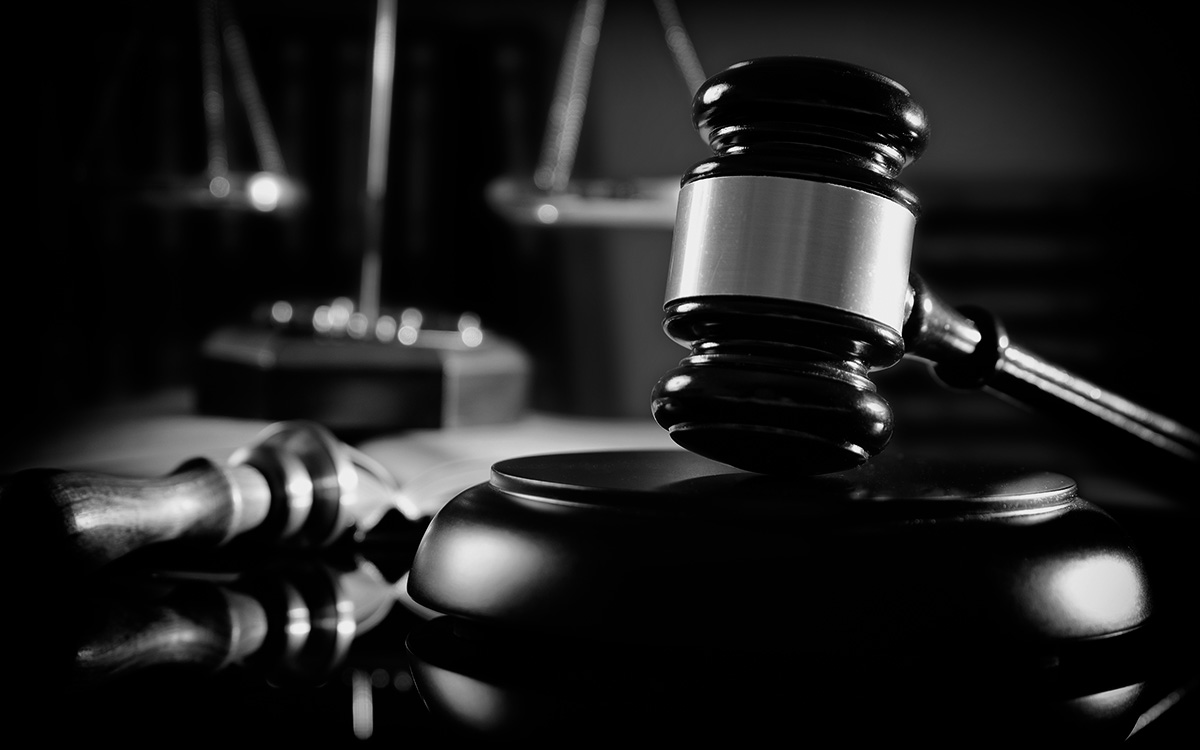
While many Americans took the week of Christmas to rest and relax, LGBTQ politics in the U.S. continued to shift. This week’s short recap of federal updates highlights two major blows to the Trump-Vance administration’s efforts to restrict gender-affirming care for minors.
19 states sue RFK Jr. to end gender-affirming care ban
New York Attorney General Letitia James announced on Tuesday that the NYAG’s office, along with 18 other states (and the District of Columbia), filed a lawsuit to stop U.S. Health and Human Services (HHS) Secretary Robert F. Kennedy Jr. from restricting gender-affirming care for minors.
In the press release, Attorney General James stressed that the push by the Trump-Vance administration’s crusade against the transgender community — specifically transgender youth — is a “clear overreach by the federal government” and relies on conservative and medically unvalidated practices to “punish providers who adhere to well-established, evidence-based care” that support gender-affirming care.
“At the core of this so-called declaration are real people: young people who need care, parents trying to support their children, and doctors who are simply following the best medical evidence available,” said Attorney General James. “Secretary Kennedy cannot unilaterally change medical standards by posting a document online, and no one should lose access to medically necessary health care because their federal government tried to interfere in decisions that belong in doctors’ offices. My office will always stand up for New Yorkers’ health, dignity, and right to make medical decisions free from intimidation.”
The lawsuit is a direct response to HHS’ Dec. 18 announcement that it will pursue regulatory changes that would make gender-affirming health care for transgender children more difficult, if not impossible, to access. It would also restrict federal funding for any hospital that does not comply with the directive. KFF, an independent source for health policy research, polling, and journalism, found that in 2023 federal funding covered nearly 45% of total spending on hospital care in the U.S.
The HHS directive stems directly from President Donald Trump’s Jan. 28 Executive Order, Protecting Children From Chemical and Surgical Mutilation, which formally establishes U.S. opposition to gender-affirming care and pledges to end federal funding for such treatments.
The American Medical Association, the nation’s largest and most influential physician organization, has repeatedly opposed measures like the one pushed by President Trump’s administration that restrict access to trans health care.
“The AMA supports public and private health insurance coverage for treatment of gender dysphoria and opposes the denial of health insurance based on sexual orientation or gender identity,” a statement on the AMA’s website reads. “Improving access to gender-affirming care is an important means of improving health outcomes for the transgender population.”
The lawsuit also names Oregon, Washington, California, Colorado, Connecticut, Delaware, the District of Columbia, Illinois, Maine, Maryland, Massachusetts, Michigan, Minnesota, New Mexico, Pennsylvania, Rhode Island, Vermont, and Wisconsin as having joined New York in the push against restricting gender-affirming care.
At the HHS news conference last Thursday, Jim O’Neill, deputy secretary of the department, asserted, “Men are men. Men can never become women. Women are women. Women can never become men.”
DOJ stopped from gaining health care records of trans youth
U.S. District Judge Cathy Bissoon blocked an attempt by the Department of Justice (DOJ) to gain “personally identifiable information about those minor transgender patients” from the University of Pittsburgh Medical Center (UPMC), saying the DOJ’s efforts “fly in the face of the Supreme Court.”
Journalist Chris Geidner originally reported the news on Dec. 25, highlighting that the Western District of Pennsylvania judge’s decision is a major blow to the Trump-Vance administration’s agenda to curtail transgender rights.
“[T]his Court joins the others in finding that the government’s demand for deeply private and personal patient information carries more than a whiff of ill intent,” Bissoon wrote in her ruling. “This is apparent from its rhetoric.”
Bissoon cited the DOJ’s “incendiary characterization” of trans youth care on the DOJ website as proof, which calls the practice politically motivated rather than medically sound and seeks to “…mutilate children in the service of a warped ideology.” This is despite the fact that a majority of gender-affirming care has nothing to do with surgery.
In United States v. Skrmetti, the Supreme Court ruled along party lines that states — namely Tennessee — have the right to pass legislation that can prohibit certain medical treatments for transgender minors, saying the law is not subject to heightened scrutiny under the Equal Protection Clause of the Fourteenth Amendment because it does not involve suspect categories like race, national origin, alienage, and religion, which would require the government to show the law serves a compelling interest and is narrowly tailored, sending decision-making power back to the states.
“The government cannot pick and choose the aspects of Skrmetti to honor, and which to ignore,” Judge Bissoon added.
The government argued unsuccessfully that the parents of the children whose records would have been made available to the DOJ “lacked standing” because the subpoena was directed at UPMC and that they did not respond in a timely manner. Bissoon rejected the timeliness argument in particular as “disingenuous.”
Bissoon, who was nominated to the bench by then-President Obama, is at least the fourth judge to reject the DOJ’s attempted intrusion into the health care of trans youth according to Geidner.
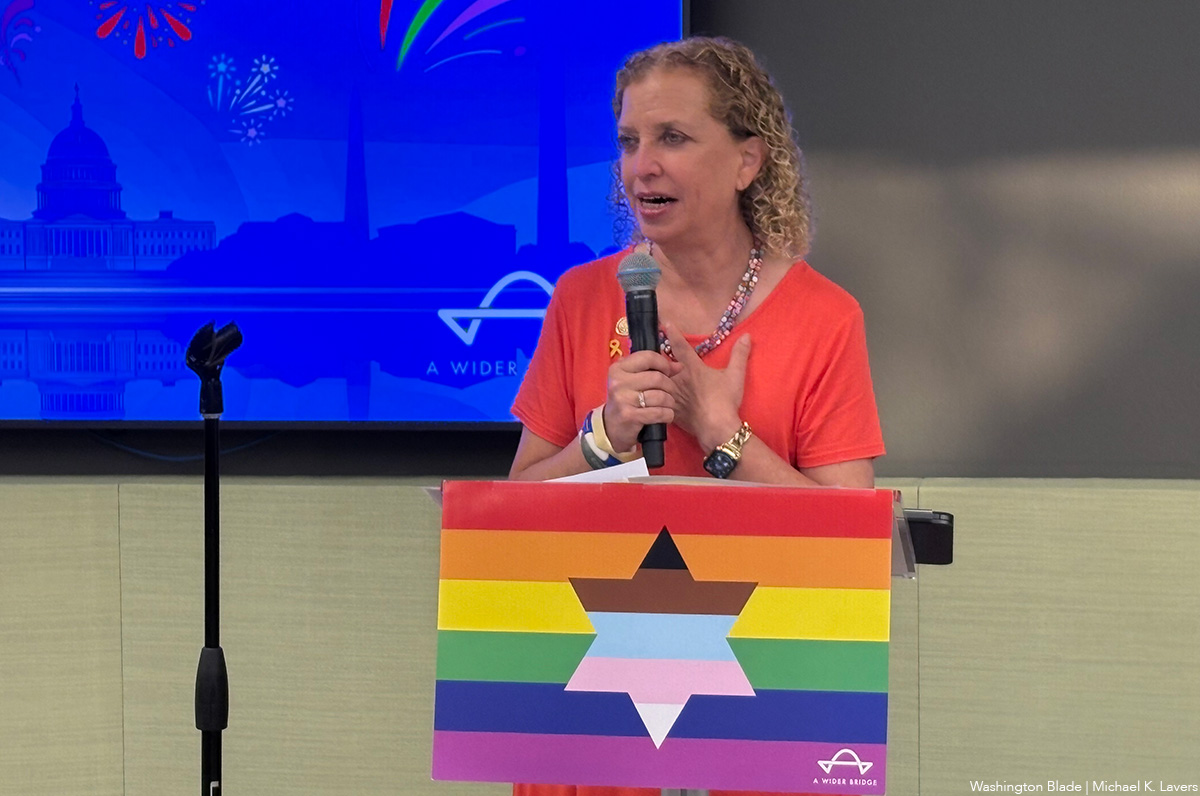
A Wider Bridge on Friday announced it will shut down at the end of the month.
The group that “mobilizes the LGBTQ community to fight antisemitism and support Israel and its LGBTQ community” in a letter to supporters said financial challenges prompted the decision.
“After 15 years of building bridges between LGBTQ communities in North America and Israel, A Wider Bridge has made the difficult decision to wind down operations as of Dec. 31, 2025,” it reads.
“This decision comes after challenging financial realities despite our best efforts to secure sustainable funding. We deeply appreciate our supporters and partners who made this work possible.”
Arthur Slepian founded A Wider Bridge in 2010.
The organization in 2016 organized a reception at the National LGBTQ Task Force’s Creating Change Conference in Chicago that was to have featured to Israeli activists. More than 200 people who protested against A Wider Bridge forced the event’s cancellation.
A Wider Bridge in 2024 urged the Capital Pride Alliance and other Pride organizers to ensure Jewish people can safely participate in their events in response to an increase in antisemitic attacks after Hamas militants attacked Israel on Oct. 7, 2023.
The Jewish Telegraphic Agency reported authorities in Vermont late last year charged Ethan Felson, who was A Wider Bridge’s then-executive director, with lewd and lascivious conduct after alleged sexual misconduct against a museum employee. Rabbi Denise Eger succeeded Felson as A Wider Bridge’s interim executive director.
A Wider Bridge in June honored U.S. Rep. Debbie Wasserman Schultz (D-Fla.) at its Pride event that took place at the Capital Jewish Museum in D.C. The event took place 15 days after a gunman killed two Israeli Embassy employees — Yaron Lischinsky and Sarah Milgrim — as they were leaving an event at the museum.
“Though we are winding down, this is not a time to back down. We recognize the deep importance of our mission and work amid attacks on Jewish people and LGBTQ people – and LGBTQ Jews at the intersection,” said A Wider Bridge in its letter. “Our board members remain committed to showing up in their individual capacities to represent queer Jews across diverse spaces — and we know our partners and supporters will continue to do the same.”
Editor’s note: Washington Blade International News Editor Michael K. Lavers traveled to Israel and Palestine with A Wider Bridge in 2016.
The White House
‘Trump Rx’ plan includes sharp cuts to HIV drug prices
President made announcement on Friday

President Donald Trump met with leaders from some of the world’s largest pharmaceutical companies at the White House on Friday to announce his new “Trump Rx” plan and outline efforts to reduce medication costs for Americans.
During the roughly 47-minute meeting in the Roosevelt Room, Trump detailed his administration’s efforts to cut prescription drug prices and make medications more affordable for U.S. patients.
“Starting next year, American drug prices will come down fast, furious, and will soon be among the lowest in the developed world,” Trump said during the meeting. “For decades, Americans have been forced to pay the highest prices in the world for prescription drugs by far … We will get the lowest price of anyone in the world.”
Trump signed an executive order in May directing his administration “to do everything in its power to slash prescription drug prices for Americans while getting other countries to pay more.”
“This represents the greatest victory for patient affordability in the history of American health care, by far, and every single American will benefit,” he added.
Several pharmaceutical executives stood behind the president during the announcement, including Sanofi CEO Paul Hudson, Novartis CEO Vas Narasimhan, Genentech CEO Ashley Magargee, Boehringer Ingelheim (USA) CEO Jean-Michel Boers, Gilead Sciences CEO Dan O’Day, Bristol Myers Squibb General Counsel Cari Gallman, GSK CEO Emma Walmsley, Merck CEO Robert Davis, and Amgen Executive Vice President Peter Griffith.
Also in attendance were Health and Human Services Secretary Robert F. Kennedy Jr., Commerce Secretary Howard Lutnick, Centers for Medicare and Medicaid Services Administrator Mehmet Oz, and Food and Drug Administration Commissioner Marty Makary.
Under the Trump Rx plan, the administration outlined a series of proposed drug price changes across multiple companies and therapeutic areas. Among them were reductions for Amgen’s cholesterol-lowering drug repatha from $573 to $239; Bristol Myers Squibb’s HIV medication reyataz from $1,449 to $217; Boehringer Ingelheim’s type 2 diabetes medication jentadueto from $525 to $55; Genentech’s flu medication xofluza from $168 to $50; and Gilead Sciences’ hepatitis C medication epclusa from $24,920 to $2,425.
Additional reductions included several GSK inhalers — such as the asthma inhaler advair diskus 500/50, from $265 to $89 — Merck’s diabetes medication januvia from $330 to $100, Novartis’ multiple sclerosis medication mayzent from $9,987 to $1,137, and Sanofi’s blood thinner plavix from $756 to $16. Sanofi insulin products would also be capped at $35 per month’s supply.
These prices, however, would only be available to patients who purchase medications directly through TrumpRx. According to the program’s website, TrumpRx “connects patients directly with the best prices, increasing transparency, and cutting out costly third-party markups.”
Kennedy spoke after Trump, thanking the president for efforts to lower pharmaceutical costs in the U.S., where evidence has shown that drug prices — including both brand-name and generic medications — are nearly 2.78 times higher than prices in comparable countries. According to the Pharmaceutical Research and Manufacturers of America, roughly half of every dollar spent on brand-name drugs goes to entities that play no role in their research, development, or manufacturing.
“This is affordability in action,” Kennedy said. “We are reversing that trend and making sure that Americans can afford to get the life-saving solutions.”
Gilead CEO Dan O’Day also spoke about how the restructuring of drug costs under TrumpRx, combined with emerging technologies, could help reduce HIV transmission — a virus that, if untreated, can progress to AIDS. The LGBTQ community remains disproportionately affected by HIV.
“Thank you, Mr. President — you and the administration,” O’Day said. “I think this objective of achieving the commitment to affordability and future innovation is extraordinary … We just recently launched a new medicine that’s only given twice a year to prevent HIV, and we’re working with Secretary Kennedy and his entire team, as well as the State Department, as a part of your strategy to support ending the epidemic during your term.
“I’ve never been more optimistic about the innovation that exists across these companies and the impact this could have on America’s health and economy,” he added.
Trump interjected, asking, “And that’s working well with HIV?”
“Yes,” O’Day replied.
“It’s a big event,” Trump said.
“It literally prevents HIV almost 100 percent given twice a year,” O’Day responded.
A similar anti-HIV medication is currently prescribed more than injectable form mentioned by O’Day. PrEP, is a medication regimen proven to significantly reduce HIV infection rates for people at high risk. Without insurance, brand-name Truvada can cost roughly $2,000 per month, while a generic version costs about $60 per month.
Even when medication prices are reduced, PrEP access carries additional costs, including clinic and laboratory fees, office visits, required HIV and sexually transmitted infection testing, adherence services and counseling, and outreach to potentially eligible patients and providers.
According to a 2022 study, the annual total cost per person for PrEP — including medication and required clinical and laboratory monitoring — is approximately $12,000 to $13,000 per year.
The TrumpRx federal platform website is now live at TrumpRx.gov, but the program is not slated to begin offering reduced drug prices until January.



